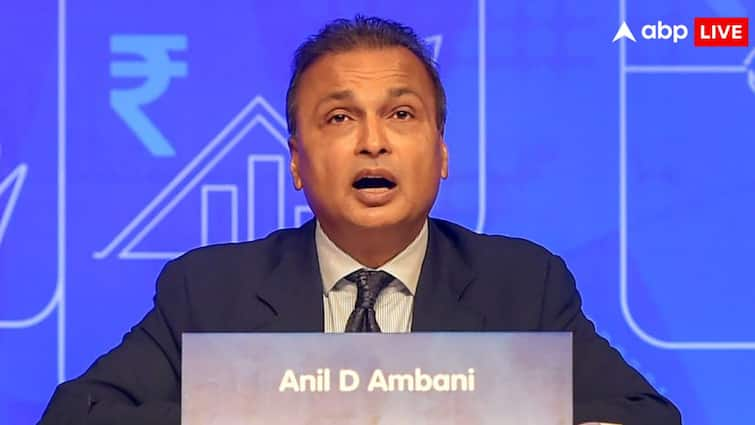Nirmala Sitharaman To Meet With Industry Leaders Today, Focus On Shaping GST 2.0 Framework: Report
In a move to fast-track the next phase of Goods and Services Tax (GST) reforms, Finance Minister Nirmala Sitharaman is set to hold crucial consultations with representatives from India Inc on May 27. Citing two senior government officials, Moneycontrol reported that this meeting will play a central role in shaping the contours of the proposed GST 2.0 framework, aimed at simplifying the country’s indirect tax regime. Senior bureaucrats from the Ministry of Finance, officials from the Ministry of Corporate Affairs, and Chief Economic Adviser V Anantha Nageswaran are expected to attend the high-level discussions, the report noted. The engagement will feature detailed presentations from industry leaders, outlining their expectations and suggestions for improving the GST system. “FM is meeting with India Inc. There will be presentations on GST 2.0,” the news organisation reported quoting one of the government sources. According to another official, the business community will actively contribute inputs during the meeting, which are likely to inform the policy blueprint going forward. “India Inc will give a presentation on GST reforms that they are seeking,” the source added. Push for a Streamlined Tax Structure The Centre is exploring a shift from the existing four-tier GST system—comprising 5 per cent, 12 percent, 18 per cent, and 28 percent rates—to a simplified three-rate format. Under consideration is the elimination of the 12 per cent slab, a move intended to rationalise the tax system and support ease of doing business. Officials familiar with the discussions said the revised structure aims to reduce litigation, encourage higher compliance, and stimulate consumer spending. “Efforts are ongoing to rationalise the GST structure, and the government is determined to move towards a simpler regime that supports economic growth without compromising on revenue,” one of them stated. Experts in public finance have noted that indirect tax reforms, such as GST restructuring have a more direct and immediate impact on consumption patterns compared to income tax changes. This has prompted the Centre to intensify efforts toward rationalising tax rates as a means to boost demand. Also read : From Walmart, Adidas To Shein, Temu, All Warn About Price Hikes As US Consumers Brace For Tariff Impact Addressing Classification Conflicts Alongside rate simplification, the government is also focusing on resolving disputes linked to the classification of goods, particularly food items—across various GST slabs. These ambiguities have long plagued businesses, often leading to litigation and inconsistent tax treatment, ultimately affecting revenue mobilisation. “Classification issues, particularly those related to food items, are being prioritised due to the high frequency of disputes and their impact on revenue collection,” an official explained. Ensuring greater clarity in these classifications is expected to support smoother implementation and uniformity in the GST regime. Since its inception in July 2017, GST has become a cornerstone of India’s indirect tax system. However, despite multiple rounds of refinements by the Group of Ministers (GoM) on GST rate rationalisation, the tax structure has remained complex. Adjustments so far have been limited to shifting individual items across tax brackets without introducing broader structural changes. Today’s meeting will mark a critical step in moving beyond piecemeal adjustments towards a comprehensive reform model. The outcome of this consultation is likely to influence how the Centre engages with states in building consensus for GST 2.0, which is being envisioned as a foundational overhaul to improve efficiency and drive economic momentum.

In a move to fast-track the next phase of Goods and Services Tax (GST) reforms, Finance Minister Nirmala Sitharaman is set to hold crucial consultations with representatives from India Inc on May 27.
Citing two senior government officials, Moneycontrol reported that this meeting will play a central role in shaping the contours of the proposed GST 2.0 framework, aimed at simplifying the country’s indirect tax regime.
Senior bureaucrats from the Ministry of Finance, officials from the Ministry of Corporate Affairs, and Chief Economic Adviser V Anantha Nageswaran are expected to attend the high-level discussions, the report noted.
The engagement will feature detailed presentations from industry leaders, outlining their expectations and suggestions for improving the GST system.
“FM is meeting with India Inc. There will be presentations on GST 2.0,” the news organisation reported quoting one of the government sources. According to another official, the business community will actively contribute inputs during the meeting, which are likely to inform the policy blueprint going forward. “India Inc will give a presentation on GST reforms that they are seeking,” the source added.
Push for a Streamlined Tax Structure
The Centre is exploring a shift from the existing four-tier GST system—comprising 5 per cent, 12 percent, 18 per cent, and 28 percent rates—to a simplified three-rate format. Under consideration is the elimination of the 12 per cent slab, a move intended to rationalise the tax system and support ease of doing business.
Officials familiar with the discussions said the revised structure aims to reduce litigation, encourage higher compliance, and stimulate consumer spending. “Efforts are ongoing to rationalise the GST structure, and the government is determined to move towards a simpler regime that supports economic growth without compromising on revenue,” one of them stated.
Experts in public finance have noted that indirect tax reforms, such as GST restructuring have a more direct and immediate impact on consumption patterns compared to income tax changes. This has prompted the Centre to intensify efforts toward rationalising tax rates as a means to boost demand.
Also read : From Walmart, Adidas To Shein, Temu, All Warn About Price Hikes As US Consumers Brace For Tariff Impact
Addressing Classification Conflicts
Alongside rate simplification, the government is also focusing on resolving disputes linked to the classification of goods, particularly food items—across various GST slabs. These ambiguities have long plagued businesses, often leading to litigation and inconsistent tax treatment, ultimately affecting revenue mobilisation.
“Classification issues, particularly those related to food items, are being prioritised due to the high frequency of disputes and their impact on revenue collection,” an official explained. Ensuring greater clarity in these classifications is expected to support smoother implementation and uniformity in the GST regime.
Since its inception in July 2017, GST has become a cornerstone of India’s indirect tax system. However, despite multiple rounds of refinements by the Group of Ministers (GoM) on GST rate rationalisation, the tax structure has remained complex. Adjustments so far have been limited to shifting individual items across tax brackets without introducing broader structural changes.
Today’s meeting will mark a critical step in moving beyond piecemeal adjustments towards a comprehensive reform model. The outcome of this consultation is likely to influence how the Centre engages with states in building consensus for GST 2.0, which is being envisioned as a foundational overhaul to improve efficiency and drive economic momentum.
What's Your Reaction?











































